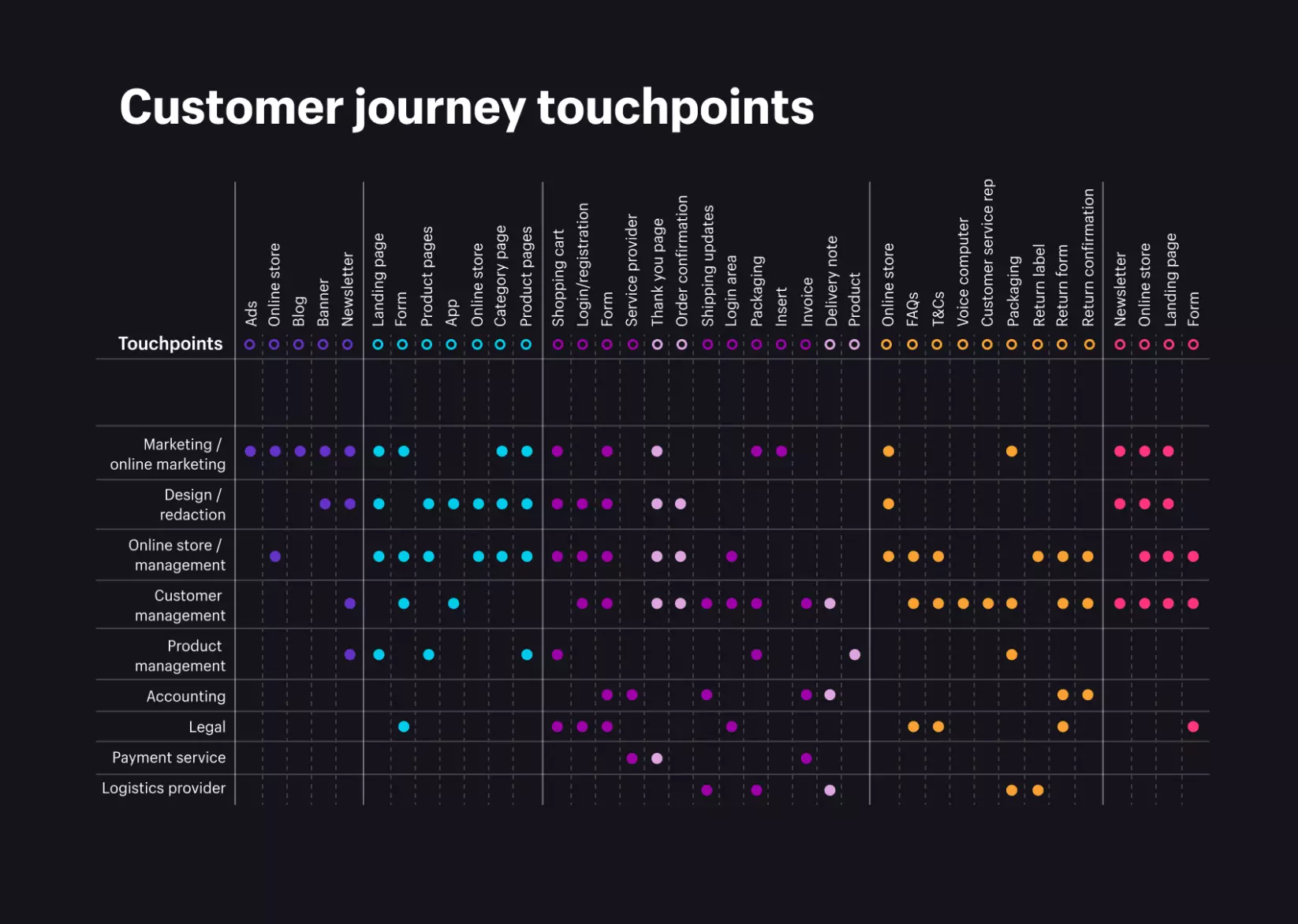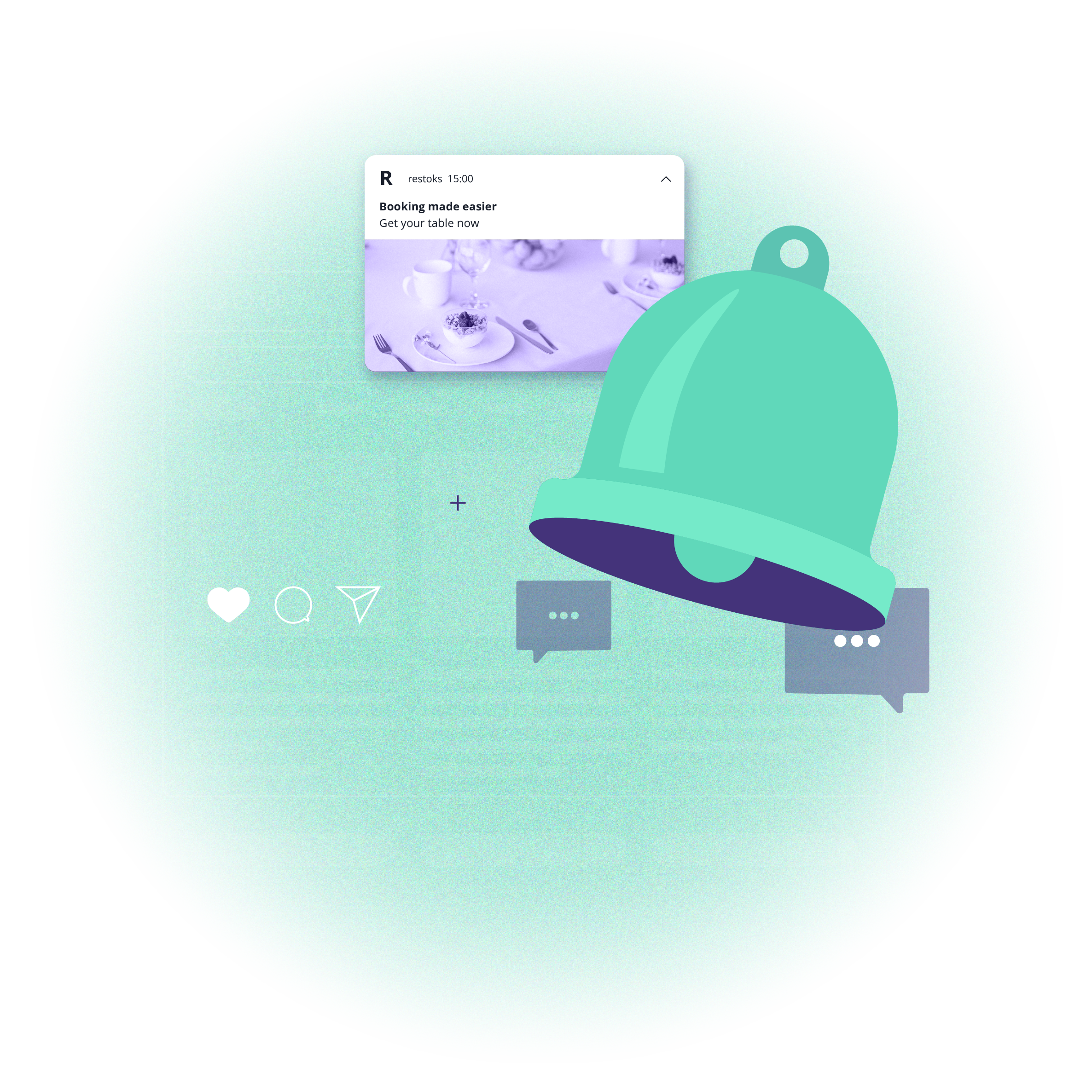How to create a customer journey map - best practices
 Aleksandra Kozioł
Aleksandra Kozioł
Customer journey maps are very useful in almost every company, even if you've just started or are a solopreneur. However, there are some questions to consider when working on the customer journey map. How can you create a customer journey map? What should be included in such a map? Where should you start the customer journey mapping process? These are the questions we want to discuss in this post.
Let's start with a comparison. Every purchasing process, whether it's in B2B or B2C, can be likened to a journey. Your customer (or user or client) is a traveler. They set off on a journey because they are not satisfied with their current situation. Most likely, they have a need or a problem that needs to be solved. Your product/service is the destination and the solution at the same time. Obviously, the traveler wants to get to the destination (they want to deal with their issue), but to do so, they need to do the trip - go through several stages depicting the entire customer journey. And this is where we get to the question of customer journey mapping.
Let's start with the beginning.
What is customer journey mapping all about?
In short, every customer journey map is a visual representation of how a customer interacts with your brand/product, how they get to know it, how they conduct research, and finally - place the order in your company. Ideally, it should be made from the customer's perspective and include such elements as customer needs, pain points, and steps each customer takes along the way. We'll talk about this more thoroughly in a moment.
To streamline the process of customer journey mapping, companies use infographics or flowcharts to depict the process. There are many customer journey map templates out there, but today, we want you to take a look at a very good example of a straightforward map that can be adapted to almost any company:

Such a map is usually a vital part of the larger customer experience strategy.
Stages in customer journey mapping
As you can see, this customer journey map template shows five crucial stages:
Awareness (here, the customer experiences a problem or a need, and they understand it needs to be solved)
Consideration (the customer is comparing different options, conducting research, reading online reviews, and trying to make the best decision)
Decision (it's time to place an order; if the previous two stages were successful for you, the order is now being placed at your company)
Service (the customer already has the product, they can be in touch with your helpdesk or customer service to ask additional questions, etc.)
Loyalty (if the level of customer satisfaction is sufficient, the customer becomes a regular visitor at your company, they can sign up for the loyalty program or tell others about your product, etc.)
The majority of existing customer journey maps use the same or similar stages. If the purchasing process in your company is complex, there can be more of these stages, even eight or nine. It's important for your map to accurately reflect the process in YOUR company. There is no one-fits-all way of creating such a document; it's the job of your marketing and customer service team.
Other elements of CJM
BRAND TOUCHPOINTS
Of course, customer journeys are not only about the stages but also about everything that's going on in between. There is a separate row for that, and it's labeled touchpoints. Touchpoints are moments of interaction between the customer and the company. Here are a few examples:
A customer receives a newsletter with the new offer - that's a touchpoint
A customer sees a Facebook Ad promoting your online store - that's a touchpoint
A customer tries to get in touch with the customer service team, and they are waiting on the phone - that's a touchpoint.
Typical touchpoints comprise:
Website and online store
Ads and sponsored posts
Social media profiles
Emails, newsletters, and push notifications
Some time ago, Shopify published a very nice chart comprising a comprehensive list of available touchpoints:

CUSTOMER PERSONAS
Sometimes referred to as buyer personas, these are semi-fictional representations of your average customer. The goal behind creating a customer persona is to get a deeper understanding of what your customers need and who they are. Take a look at this example of a buyer persona template:

Customer personas usually have specific demographic characteristics, interests, problems, motivations, and everyday challenges. If there are typical questions/objections related to a specific target group, they should also be included in the customer persona.
Such templates can also have career-related data, depending on what's relevant to your company. If you run a pet store, you will probably give each of your buyer persona a pet, whereas, in B2B customer journeys, that's irrelevant.
Big companies often have multiple personas, and that's a good thing. If you run a company that serves many different customer groups, it is reasonable to create more than one persona to keep everything well-organized.
Now, you have a big picture of what customer journey mapping is all about and what are the main elements you need to consider when working on one. Now, let's answer a crucial question:
Why is customer journey mapping important?
Have you thought that maybe this isn't for you? After all, there's a lot of work to be done, and you're not sure if it's worth it. Many small companies think this way, but the truth is customer journey maps are very useful, both in B2B and B2C. Why?
They help marketers and customer service teams understand their customers better and gain insights. With a well-designed user journey, you see what can encourage your customers to place an order, what's important for them, and what they are looking for in your product.
They allow you to identify all the crucial stages and elements of the purchasing process and see what your customers experience before, during, and after placing an order. As a result, you can tweak every single element to make your customers happy, which results in higher customer engagement and, in turn, improved customer retention.
They enable you to see what customers are searching for online, where they are looking for answers, and from where they are coming to your company (of course, you'll need additional research to find that out), which gives you the opportunity to focus on the most effective marketing techniques and communication channels.
Lastly, they help you understand how customers interact with your company and gather valuable customer feedback (e.g., thanks to asking the right questions about each customer's experience).
With such input, you can:
Run more effective marketing campaigns
Improve customer experience (CX) and customer loyalty
Improve your product/service
Obviously, all these elements help you build a stable and profitable business and outrun your competitors. And that's the ultimate goal of every customer journey map.
CJM - best practices
There are several things to keep in mind when designing a customer journey map. Let's have a look at them.
Don't go overboard
The truth is customer journey maps can be very complicated. In nine out of ten cases, that's not necessary. On the contrary, to make such a map useful and effective, you need to keep it simple. Include only elements that make sense in your company. This is true, especially if you run an SME.
Select the tool that you like
There are many different ways of creating a CJM. To some extent, even a piece of paper and a pencil is enough. Obviously, you need your map in a digital form, so you need a good tool to create it. Again, pick something easy and intuitive. You can try such tools as:
Canva
Figma
UXPressia
Smaply
Sketch
Decide how many maps you need
If you run a small company offering one service, perhaps one map is enough. However, if you run a big company that operates in many different sectors, you'll need more than one such map. A translation company (or LSP) is a good example. LSPs usually serve both individual and corporate customers. Individuals go to an LSP to get their marriage license or high school diploma translated into a different language. Companies go to such places to translate their marketing materials, agreements, or technical documents. In this case, you need at least two different CJMs.
Depict the whole purchasing process horizontally
It's a good idea to organize your map horizontally. This way, you will have no problem with adding additional fields and brackets, just like in the example we showed you in the introduction to this post.
You need to decide where your map begins (usually, it should begin just before the first contact with your company) and where it ends (with the placed order or with the loyalty stage that's not time-limited). You also need to add all the communication/marketing channels that are involved at every stage.
Keep additional elements separately
A CJM is never a lone island. It's always a part of the bigger marketing/CX strategy. There's no need to put everything in one file; you'll end up with a never-ending diagram that no one wants to read. It's better to put all the additional materials (customer persona descriptions, data from analytics tools, etc.) in separate files that will serve as attachments to the map. Again, go back to our example - it's not overloaded, and everything is brief and to the point. That's what you want to do.
Add user feelings
This element is frequently neglected, and that's a big mistake. Your CJM should comprise emotions that your customers experience during the purchasing process, as well as the emotions you want to evoke in them. That's a vital part of walking in the customer's shoes.
Don't forget that user emotions should also refer to other elements, such as the purchased product, the payment process, and the effectiveness of your customer service team.
Add user actions
If possible, your map should comprise every possible action. For example, at the decision stage, you can include two options (e.g., the customer clicks the "buy now" button vs. they leave the cart with an unfinished order). This way, you can decide what your reaction at each stage should be to minimize the number of lost orders or customers. Each action should have a reaction from your company. For example, if someone leaves an open cart, you can send them a push notification with a reminder.

Think about other elements
Now, we're not saying that you have to include all these elements in your map, but if you feel like you need them, you surely can take them into account:
KPIs: What's your goal for each stage? What should be accomplished with every purchasing process?
Additional data sources: If you use tools like Google Analytics, you can use data coming from them to supplement your map.
Technologies: What tools/technologies are involved at every stage? For instance, when it comes to payment, what online payment gates do you offer? When it comes to communication, what channels do you provide?
Responsibility: You can also divide your CJM by teams/departments responsible for a given stage. For example, the awareness and discovery stage is usually in the hands of your marketing team, whereas the decision stage is in the hands of your customer service/customer success team.
Where should you start?
Perhaps, at this point, you have one pressing question - "Ok, but where should I begin?" The answer is twofold.
First off, a CJM is not something you should do on your own (unless you are a solopreneur). Get your marketing and customer service teams together tell them about your plans to create a brand-new CJM, and start working on it together. If you have been running your company for some time now, you can start by depicting the process the way you see it. List every crucial stage and channel. But then, you have to question every single element and stage. Perhaps there will be a need to conduct additional research or ask customers for feedback.
Ask yourself how each stage could be improved and what can be done to make your customers' lives easier and to be more effective with sales and retaining customers.
Additionally, you can analyze available market reports and white papers, as well as your competition, to see what customers expect these days. And once you do that, put all the relevant findings on the map or in the attachments.
Summary
A customer journey map is a useful but time-consuming tool. We encourage you, though, to give it a shot. It will make your marketing more effective and your operations more streamlined. If you still feel like this is too much for you, you can always ask for help - there are many companies helping in creating and optimizing purchasing processes, as well as CJM.
And if you're looking for additional ways of staying in touch with your customers, push notifications are always a good choice!

Content Specialist @PushPushGo
Editor and writer. She is interested in media and new technologies.
Try PushPushGo to engage and connect with your audience.
Create an account and start testing!





